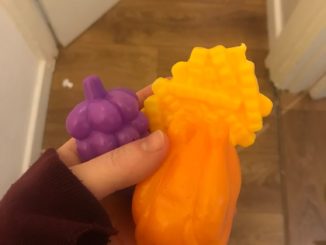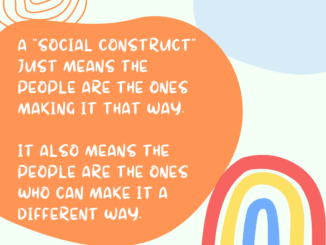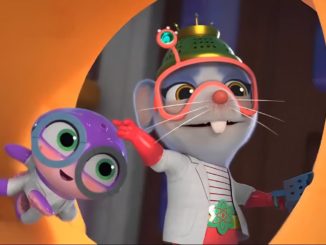Communicating is not always speaking.
It can be easy to write off neurodivergent people’s voices because they don’t always sound like neurotypical people’s voices.
Imagine finally taking the effort and time to explain something that has happened to you, only for the person listening to not even engage with the content of what you’re saying, but rather to attack the method of communication you’re using, or the emotion or tone of voice in which you said it.
(I see this every day, by the way, in kids self-advocating and then getting in trouble for their “tone” to teachers or other adults. “Quiet!” when they’re overwhelmed and the room is too loud: instead of respecting them and their sensory overload, the teacher snaps at them for snapping at others. The continual irony of adults holding kids to higher standards than themselves.)
Sometimes it’s a wonder to me that there are still Autistic people trying to talk to neurotypical people at all. It would certainly be easier to say “allistic people can’t understand us; there’s no point in trying to reach across these barriers and connect with them.”
(You know…the thing that allistic people routinely do to autistic people.)
Communicating through sign language, gestures, augmented/alternative communication (like a tablet or picture cards), writing, typing — all of these are completely valid forms of communicating. And not at all intended to be an exhaustive list.
I met a kid who was nonspeaking but wrote with giant, flowery cursive handwriting on a chalkboard that he carried around with him. One word would take up the whole board (a little larger than a sheet of paper), and then he’d erase it and write the next word, and so on.
I knew a child who used picture cards to communicate. She started out with two, for her most favorite things in the world: cheese and “outside”. We agreed as a team that we would honor these two requests as often as was feasible until she got the connection that using these really did mean that she was telling us what she wanted, that she would really be able to have those things if she asked for them.
By the time I left working on her case she had a ring with something like 75 cards on it and could ask for increasingly specific needs to be met. She could use cards to tell us that she was hurt, what specifically was hurt. She could greet us and tell us thoughts she had. Her 1:1 aide had a ring with a copy of all the cards just in case she forgot to bring hers, but she never did. It was her voice.
I met another kid who had just had a breakthrough in communication. She had just begun to understand how to use a tablet to speak. She arrived to OT, tapped “activities” then “listen to music” then “Taylor Swift”. I was a student observing — it was before I was even in OT school; I was still an undergrad student.
The OT working with her smiled and played a Taylor Swift song for a few moments, and we all sat there enjoying it. Then the OT clicked out of that section of the tablet and into a different section and asked her “Do you want to swing or do trampoline?”
She hit “back”, then “activities”, then “listen to music” then “Taylor Swift”.
The OT frowned. “No, it’s time to do something else.” Tap tap tap tap. “Swing or trampoline?”
The student clicked the same path. “Back. Activities. Listen to music. Taylor Swift.”
So the OT turned off the iPad and put it up on a shelf and carried the child to the trampoline.
I doubt the OT would have duct-taped her mouth shut if she had been speaking aloud. But she might as well have. I was horrified but didn’t say anything. I didn’t know why we couldn’t just listen to Taylor Swift while jumping on the trampoline, but I thought there must be some reason I didn’t know because I was a student. I didn’t feel like I could.
I should have. I wish I could go back and speak up for the child whose voice was taken away.



